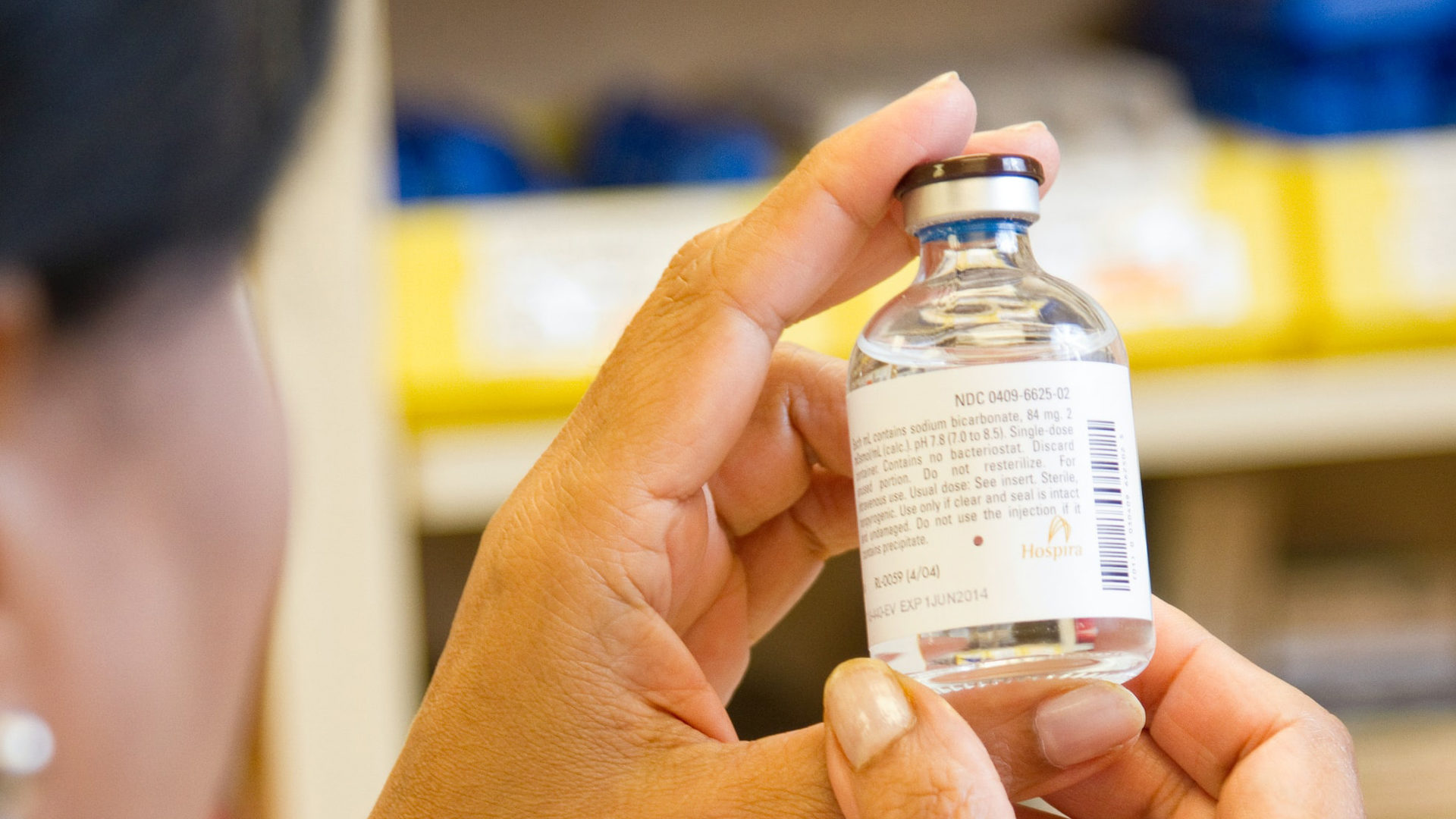Healthcare Scanner
Healthcare and Climate Change
January 2023
Can we find a balance between intellectual property rights and public health needs when tackling the climate crisis?
“The world faces a critical juncture. A health-centred, aligned response to the compounding crises can still deliver a future where people can not only survive, but thrive.” (The Lancet Countdown 2022).
Climate change is the greatest health threat that the world has faced over the last century. Whilst the effect of climate change on health has been acknowledged for some time, it is only recently that the role of the healthcare industry as an active participant in tackling the climate crisis has become more widely appreciated. Innovation will be critical to the healthcare sector in developing processes for mitigating emissions and waste, adapting healthcare systems to deal with natural disasters and a changing disease burden, and monitoring and tracking the impact of the changing climate on global health. Traditionally, as a result of the significant investment required to commercialise healthcare products, the industry has relied heavily on creating monopolies through intellectual property and regulatory exclusivity to recoup financial investment. However, when facing a multi-faceted health crisis which could span decades, can intellectual property rights be balanced with meeting public health needs?
The life sciences and healthcare sectors are a significant contributor of greenhouses gases arising from production, distribution and disposal of health related products. The healthcare sector alone is responsible for 4-5% of global carbon dioxide emissions annually, on a par with Russia, the world’s fourth highest polluter. The industry is now recognising the need to provide net zero health systems and decarbonize all aspects of product supply chains, from the bench to the patient, whilst simultaneously improving public health.
The healthcare industry has a responsibility not only to mitigate their impact on climate change, but also to quickly adapt to a global health outlook which is rapidly changing course. They must develop and implement resilient and flexible healthcare systems which can cope with the direct effects of climatic disasters such as injury and death, and can also predict, prevent and treat the indirect health effects of a warming planet. It is recognised that global rises in temperature and changes to rainfall patterns are beginning to reverse the progress made in global public health over the last century. As temperatures rise, the geographical spread, reproduction rate and periods of activity of disease vectors are predicted to increase, leading to a rise in potentially fatal cases of malaria, zika, and dengue, and cholera.
The interface between wildlife and human habitats is likely to change, increasing the potential for the spread of novel disease vectors, as we have seen with COVID-19. Alongside infectious diseases, health issues will arise from crop shortages, drought and flooding. In developed countries, increasing numbers of chronic conditions such as heart disease, stroke, lung cancer and respiratory illnesses are being attributed in part to climate change. Many conditions such as diabetes, heart disease and obesity, reduce the body’s ability to cope with heat and increase susceptibility to dehydration and heat-related illnesses. Unusual weather patterns such as floods and storms as we have seen recently in Europe, Australia and the US lead to mental health conditions such as anxiety, depression, or post-traumatic stress disorder.
For the healthcare industry to face these multi-faceted challenges, innovation will be needed across the sector, from the development of resilient healthcare systems, to using bioinformatics to forecast and model health risks and finding new treatments for new and changing disease patterns. Re-purposing of existing drugs to address new health challenges represent a faster path to market, with lower development costs. There are a growing number of examples of old drugs being used to treat other conditions, a recent well known example being the re-purposing of dexamethasone to treat COVID-19.
Figures show that the majority of investment into repurposing of a drug is made by originators during the period of exclusivity, with significantly less investment being made after expiry of patent term. The absence of generics in the marketplace during this period means that financial reward for investment is still possible. The repurposing of known drugs for new uses can be a useful tool in the fight against the health impacts of climate change, and mechanisms may be needed to encourage originator companies to continue such research after the period of exclusivity expires.
Intellectual property and strategies such as evergreening, used by the pharmaceutical and life sciences industries to maximise protection for their innovation, can act as barriers to global large scale manufacture and competitive pricing, which will be necessary in providing fair and affordable global healthcare solutions in the climate crisis. Even after the expiry of patent term, rights such as data or marketing exclusivity can serve to impede entry of competitors to the market, and keep prices high.
The HIV crisis in the 1990’s highlighted the conflict between intellectual property rights and the right to treatment, when inflexibility in pricing meant treatment was unaffordable in the developing world and led to the death of millions in Africa. Where large monopolies are held by a few key players in a marker, innovation can be stifled. As a result, it may seem that intellectual property monopolies have no place in an immense crisis such as the one which the world is now facing. In fact, using intellectual property to protect climate focussed healthcare advances will continue to be necessary to incentivise innovation, procure funding, and enable start-up companies to engage with large pharmaceutical companies. However, flexible approaches will be required to ensure fair access for all to medicines and healthcare.
In the recent COVID 19 pandemic, we saw different models developing to provide faster and fairer access to vaccines, with adaptations to the traditional approaches employed by pharmaceutical companies in relation to their intellectual property. Astra Zeneca, exclusive licensors of the Oxford University vaccine, pledged to provide the vaccine at non-for-profit rates until the end of the pandemic, despite having an intellectual property monopoly which would have enabled them to charge high prices.
Similarly, Moderna pledged not to enforce its intellectual property rights for the duration of the pandemic, although has not gone so far as to share the necessary know how. Public funding of the Oxford University and Moderna vaccines reduced the pressure to maximise profit, and enabled multi-national supply at low cost. The existence of intellectual property to protect the inventions provides the option of establishing a monopoly and recouping investment after the end of the pandemic.
The Covid-19 pandemic serves as an example of what can be achieved by balancing the need for fair access to healthcare with profit. The climate crisis is a considerably bigger problem, which may span a significantly longer timespan than the pandemic. New approaches for balancing monopolies in healthcare with public health will be needed.
We are seeing new relationships being established between pharmaceutical companies to tackle climate change, for example Sustainable Markets Initiative Health Systems Taskforce which aim to decarbonize the sector through collaboration. An extension of such collaborations may lead to patent pooling, a mechanism by which a group of pharmaceutical companies can share their intellectual property assets through group licences negotiated with public health, rather than only profit, in mind. Patent pooling provides a mechanism to facilitate data sharing, enabling faster progress to healthcare solutions, whilst also providing financial incentives to the innovator companies through group licence agreements.
In a similar vein, open pledges by a patent holder to allow third parties to access and use patented inventions without risk of infringement for a specified period of time, have been made through times of crisis. Open pledges are a useful tool in balancing the need for affordable medicines with ownership of intellectual property rights, and we may see an increase in Open pledges being offered as the climate crisis advances.
The European Commission have recently conducted a consultation, with a view to changing the framework for compulsory licensing of intellectual property rights in a health crisis in the EU. They recognise that in a crisis, such as an environmental crisis, compulsory licensing of intellectual property may be necessary as a last resort for maximising access and distribution of medicines, without relying on voluntary agreements made between pharmaceutical companies which can take significant amounts of time to negotiate, and can result in disparities across member states.
As mentioned above, repurposing of known drugs for new uses may be a useful tool in quickly developing new medicines in the climate crisis. Second medical use patents provide protection for a new medical use of a known drug, and can provide incentive for an originator to repurpose known drugs even after market entry by a generic. However, if companies are going to be encouraged to invest, adaptations to patent law may be needed. The patent system may benefit from harmonisation to address the inequalities on the protection of new uses of known compounds in different jurisdictions.
It is unrealistic to think that the pharmaceutical and life sciences industries will innovate and invest in developing the necessary health solutions needed to face the climate crisis without adequate financial reward. For this reason, intellectual property will remain critical for encouraging innovation. However, the manner in which pharmaceutical and life sciences companies develop and use their intellectual property assets, and the patent system itself will require adaptation if we are to meet the health challenges of the climate crisis without potentially devastating impact on public health.
This article was prepared by HGF Patent Director Punita Shah.































